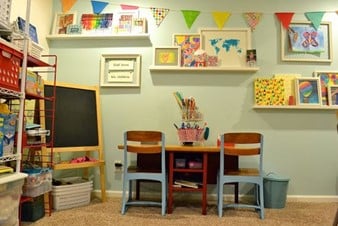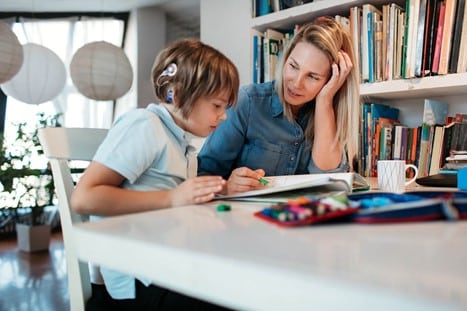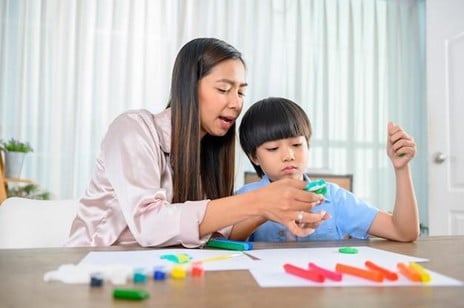Creating a Learning-Friendly Environment at Home
Creating a Learning-Friendly Environment at Home
As parents, we are often concerned about whether our home’s learning setup will best serve our kids’ education and growth. We want to ensure that our kids can grow and realise their full abilities in the “classroom” at home, even though it doesn’t have to look and feel exactly like a classroom in a school.
The home environment has a significant role in our kid’s education, which we should never undervalue. Creating a learning-friendly environment at home is essential for fostering a positive attitude toward education and encouraging a love of learning. The way the learning area is organised helps our kids excel and makes it simpler for them to take on challenges and tasks.
Here are some strategies to help you establish an environment that promotes learning and supports your child’s educational journey:
1. Designate a Learning Space

Set up a dedicated learning space in your home, such as a quiet corner, a desk, or a specific room. This space should be well-organised and free from distractions. Ensure it is well-lit with natural or artificial light.
2. Provide Learning Materials

Stock the learning space with age-appropriate learning materials, including books, educational toys, art supplies, and a computer or tablet for online learning. Having these resources readily available can encourage your child to explore and engage in educational activities.
3. Display Art and Achievements

Display your child’s artwork, school projects, and achievements around the house. Celebrate their accomplishments and let them see their progress and growth over time.
4. Maintain a Routine

Maintain a daily routine that includes dedicated time for learning and homework. Consistency helps children know what to expect and creates a sense of stability in their learning environment.
5. Limit Screen Time

Set limits on screen time and encourage alternative activities that promote learning, such as playing educational games, working on puzzles, or engaging in physical activities.
6. Be a Learning Role Model

Demonstrate your commitment to learning by reading books, pursuing hobbies, or taking courses. Children are more likely to adopt a love of learning if they see their parents valuing education.
7. Support Emotional Well-Being

A supportive and nurturing home environment is essential for learning. Address your child’s emotional needs and create an atmosphere where they feel safe, valued, and supported in their educational journey.
8. Embrace Mistakes

Teach your kid that making mistakes is a natural part of the learning process. Encourage them to learn from their errors and not be discouraged by them.
9. Balance Learning and Play

Ensure there is a balance between learning and play. Playtime is essential for relaxation and creativity, which can positively impact a child’s ability to learn.
By considering these strategies, you can create a learning-friendly environment at home that supports your child’s educational journey and to help them develop a lifelong love for learning.
Mulberry School Tour
Our Locations
Click here to visit our Contact Us page and view the preschool/infant care centres conveniently located near you.
CONNECT WITH US
USEFUL LINKS
About Us
Mulberry Learning prides itself on making the preschool experience both memorable and enjoyable while transforming a child into a competent explorer, an imaginative thinker, and a creative problem solver. Through our proprietary award-winning curriculum, unique Habits of Mind programme and dedicated staff who are passionate about imparting positive attitudes, Mulberry Learning holds strong in its promise to deliver a holistic education that nurtures the Future Ready Child.
A PREMIUM PRESCHOOL BRAND UNDER GLOBAL EDUHUB


